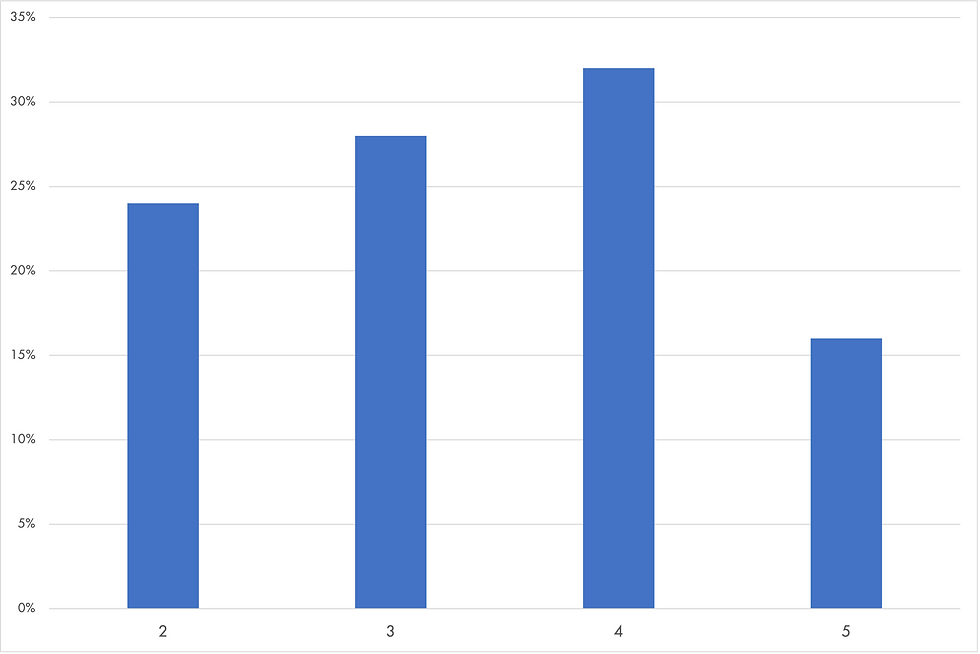With all the buzz about AI, I hear many L&D Professionals wondering where they stand in the use they are making of this technology. What are others doing with it? How much is it permeating the L&D world?

I thought the topic was worth looking into and decided to survey my L&D contacts to find out how they see matters. In this post you will find out what I learned from the participants.
If I were to give you a quick summary, it would be:
AI uptake is uneven across organisations. External L&D teams are using it more often, while Internal teams are putting more effort towards impact assessment, while they are more optimistic about its positive impact on learning outcomes and employee engagement.
ChatGPT remains the top tool for L&D purposes, while 28% of participants work for organisations that are creating their custom internal tools.
Compliance is a major concern for participants, with 25% of them using AI without a specific compliance policy.
L&D Pros expect AI to massively disrupt their sector, but they don't expect the change to be immediate and expect their companies to lead the way in process changes. External teams are more concerned about the job impact.
Let's dive into the details.
How often is AI used?
External L&D teams are using AI substantially more often than internals (4.30 vs 3.70), with 40% of them reporting they use it 'Always'. One possible explanation could be the fact Internal teams tend to be more prescribed in terms of the IT tools allowed in their organisation.

Top Tools
ChatGPT remains the top choice across different contexts. Nearly 1 out of 3 (28%) respondents work for organisations with custom internal AI tools.
Tool | Frequency |
ChatGPT | 56% |
Custom internal tools | 28% |
Google Gemini | 12% |
Flowise | 8% |
Microsoft Copilot | 8% |
Dall-e | 8% |
Other tools used:
Grammarly, Generative Fill, Claude.ai, Perplexity, ChatGBT, SkillsGPT, Canva, Adobe Firefly, PlayHT, Deeply.com, WellSaid, Document AI, and DocWiz.
AI Effectiveness for L&D
Despite the hype around the impact of AI, L&D Professionals are only moderately optimistic about how effective AI can be to improve learning outcomes: 3.40 average on a 1-5 scale.

However, there are differences depending on certain factors:
Using AI more often correlates with considering it more effective. There is a weak positive correlation (0.36) between use frequency and perceived effectiveness.
Internals are slightly more optimistic about its impact than Externals (3.50 vs 3.30 in 1-5 scale).
Impact Assessment
A vast majority of participants are not measuring the impact of AI in their initiatives.

Interestingly, those who are measuring the impact of AI are more optimistic about its effectiveness (3.71 vs 3.27)
Internals are measuring the impact more often than externals (33% vs 20% of the time). Of course, this may be related to the fact externals are only involved at certain stages and struggle to follow through the impact of their L&D initiatives.
Obstacles
Technology limitations are the biggest obstacle for adoption. While some are likely to be related to how new the technology is, specific guidance could help in most cases (use policy and training are 2nd and 3rd top obstacles).
Most Frequent Obstacles |
Technology limitations: AI won't do what's expected of it |
Use policy: not defined in organisation |
Insufficient training provided |
Complex implementation of AI technology |
Internal resistance |
Employee Engagement
67% of respondents report AI has had no impact on employee engagement.

However, those who are assessing the impact of AI on their L&D strategy are more likely to report their engagement has increased than those who are not performing any impact assessment (1.57 vs 1).
Compliance
Anonymising data is the most frequent action taken to ensure AI is used in a compliant manner, along with using an AI platform in a protected environment.
Surprisingly, 24% of participants are using AI without any compliance measure, with the associated risks for their data and processes.
Compliance Measures | Frequency |
Anonymising data | 32% |
Protected environment | 24% |
Nothing | 24% |
Transparent communication | 16% |
Expected Trends
Participants shared a wealth of insightful comments. Here is a selection reflecting some of the most common sentiments:
AI will take its seat as content provider and curator while the role of L&D pros will shift.
As with all advancements in learning over the last decade, I feel that AI will help massively with learning in the flow of work or learning at the point of need.
A greater reliance on it to generate outlines, but I see a steep learning curve in terms of using it seamlessly.
I foresee the benefits of AI usage being offset by content developer job losses and/or replacement by lower-skilled people as AI dependency grows.
Using AI to point out your blindspots and biases is incredibly helpful in creating more rich and complex learning experiences that feel simple to the learners.
Survey Details
This survey was exploratory in nature, intended to identify general trends in the L&D sector around their use of AI technologies. All conclusions are preliminary and should be validated in further depth.
Conducted from February 13th to March 19th, 2024 via a web-based survey tool (Microsoft Forms).
Questions drafted based on personal insights on the topic fed into OpenAI's ChatGPT engine.
Sample: 25 L&D Professionals from different backgrounds, gathered via LinkedIn sharing and direct messaging. The only requirement was being an active professional connected to the field of L&D.
Link to survey:
Full dataset available upon request.
コメント